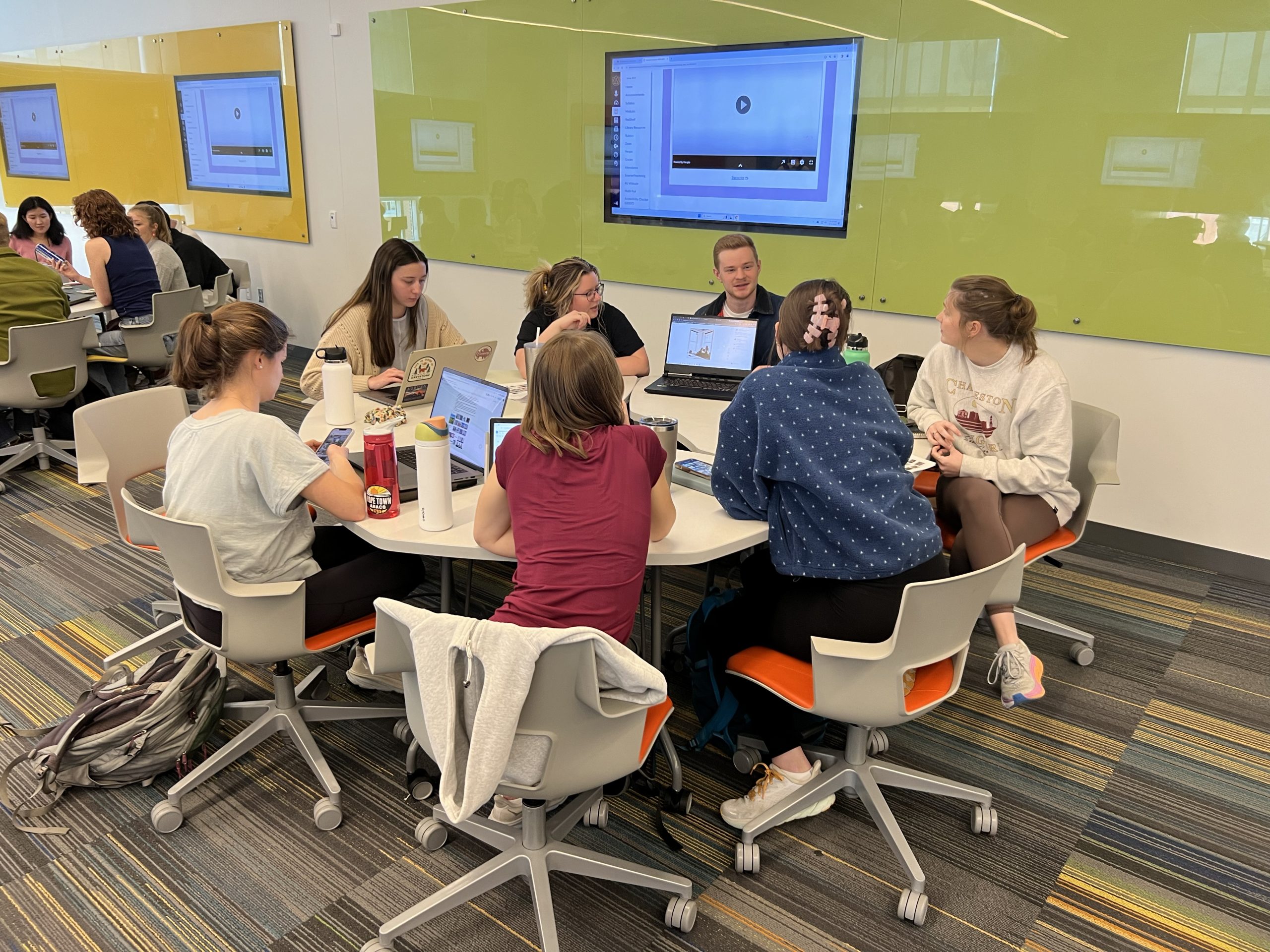CADC, Biggio Center Collaboration Key to Better Classroom Experience

Like most people, David Hinson found his comfortable routines turned upside down during the recent COVID pandemic.

But for Hinson, Associate Dean for Graduate Studies and Research and the R. Hugh Daniel Professor of Architecture in Auburn’s College of Architecture, Design and Construction, the disruption also upended the comfortable teaching patterns he had established over a distinguished 30-year teaching career.
Like teachers and professors everywhere, Hinson found himself scrambling to adapt to distance learning, as teaching went remote and classes shifted online. The transition wasn’t always smooth. And nowhere were the changes a bigger adjustment for him than in his professional practice course, covering such critical material as running a business, marketing and communication, project management and professional ethics.
“For the first 28 years of teaching the course, I used the traditional ‘stand and deliver’ approach, lecturing accompanied by slides,” Hinson recalled. “While I was aware there were other models of teaching—in particular hybrid formats combining online and asynchronous delivery—I stuck to the model I knew and trusted.
“But the COVID pandemic was an ice breaker,” he continued. “Like everyone, all at once I had to learn new ways of engaging my students. That experience was bumpy, but the silver lining was that it broke down my resistance to new ways of teaching.”
I’m pleased how this approach provides more time to infuse depth and critical reflection into the course, without sacrificing breadth of content.
Fortunately for Hinson, there are resources at Auburn for just such eventualities. One of those is the Biggio Center for the Enhancement of Teaching and Learning, where faculty, staff and students can find support and instruction in new technologies, curriculum design and online learning.
Hinson teamed with Shawndra Bowers, associate director of learning experience design at the Center, for an instructional design consultation. Together, they decided to take his onsite lecture course and turn it into an active learning course leveraging the best of online teaching and traditional learning.
The pair worked on initial changes to the course with the understanding the redesign was a work in progress. With the COVID pandemic eventually slowing and the university reopened, Hinson taught the first iteration of the redesigned curriculum as a companion to his in-person lecture style in spring 2022. Afterwards, he and Bowers sought feedback from the students and other stakeholders to further refine the new model.

The end result is a redesigned 12-module course—taught in a classroom designed for blended learning rather than a traditional lecture hall—based on three distinct pillars. These include providing background information in advance of each class to lend additional depth and context; introducing a remote, teams-based collaboration with actual practitioners; and providing more face-to-face time for in-class discussion. The new design has been a hit, both for the students and their professor.

“I’m two years into using this new approach, and still learning how to use these tools as I go,” concluded Hinson. “I’m pleased how this approach provides more time to infuse depth and critical reflection into the course, without sacrificing breadth of content. And to be honest, while I’ve always loved teaching professional practice, this new approach is just a lot more fun!”
See more in:
Alumni, Alumni Recognition, Faculty Collaboration, Faculty Recognition, Faculty Work, Student Experience
Related people:
David Hinson



